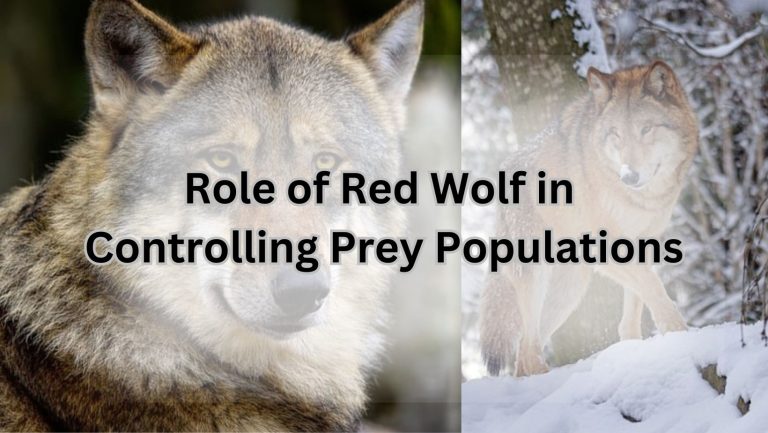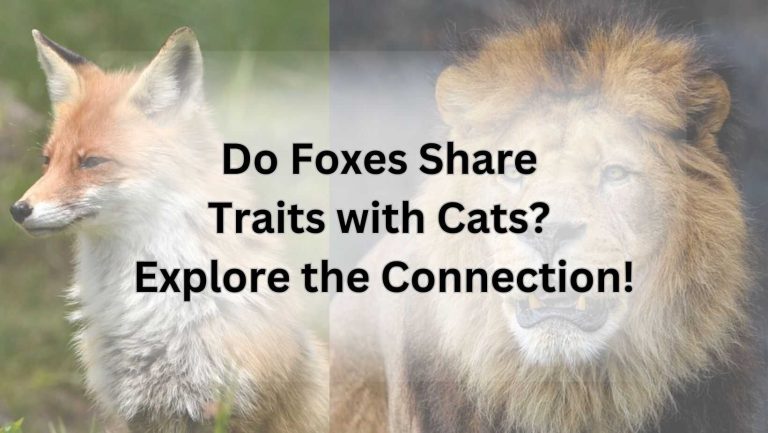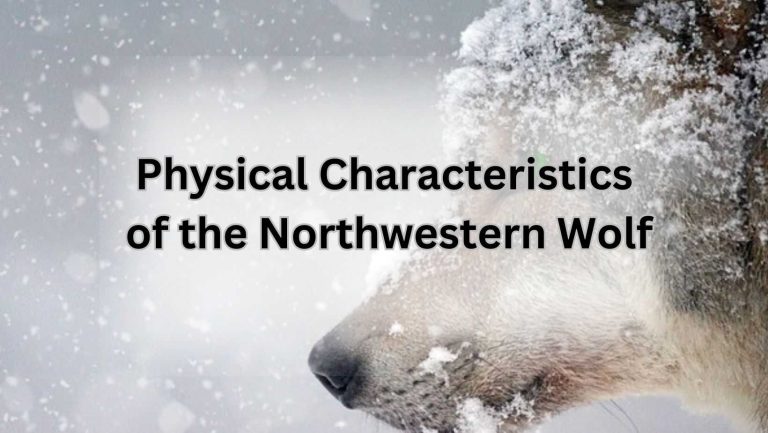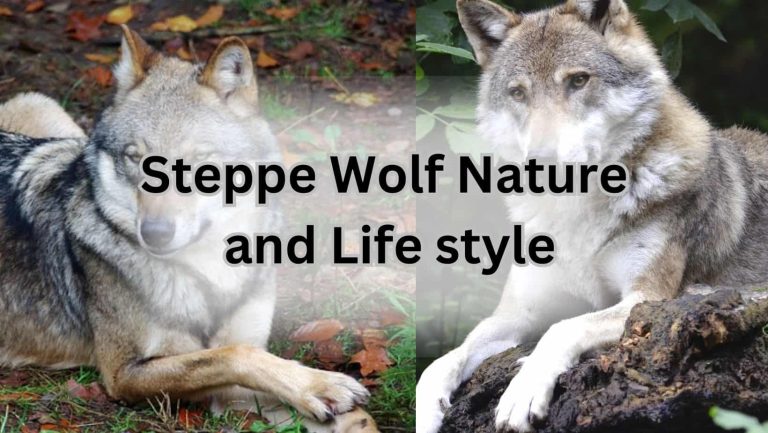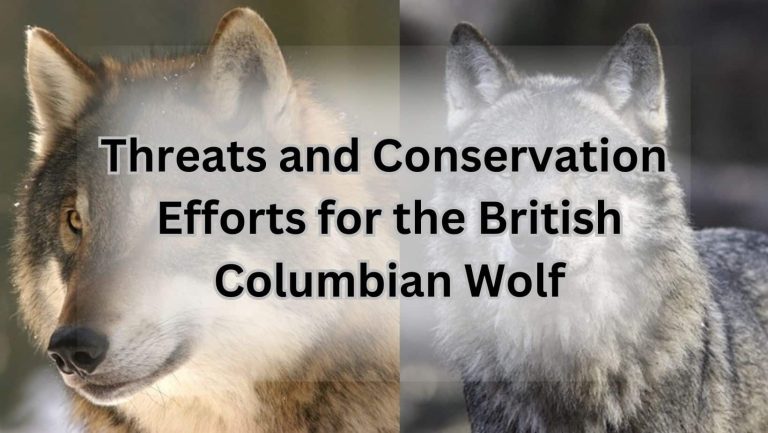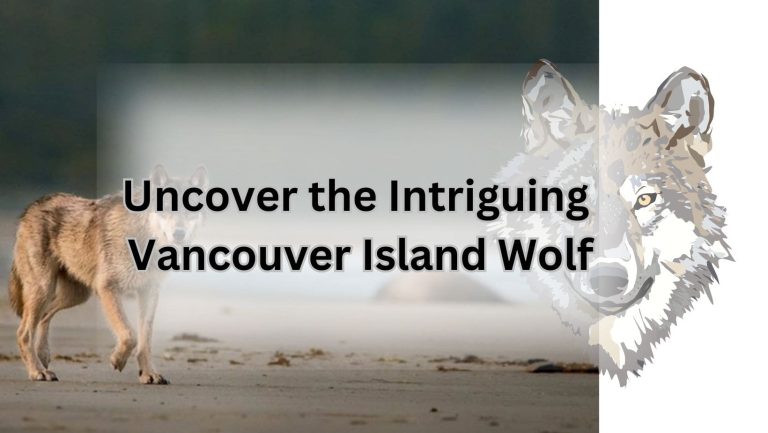Italian Wolf: The Majestic Canid of the Wild!
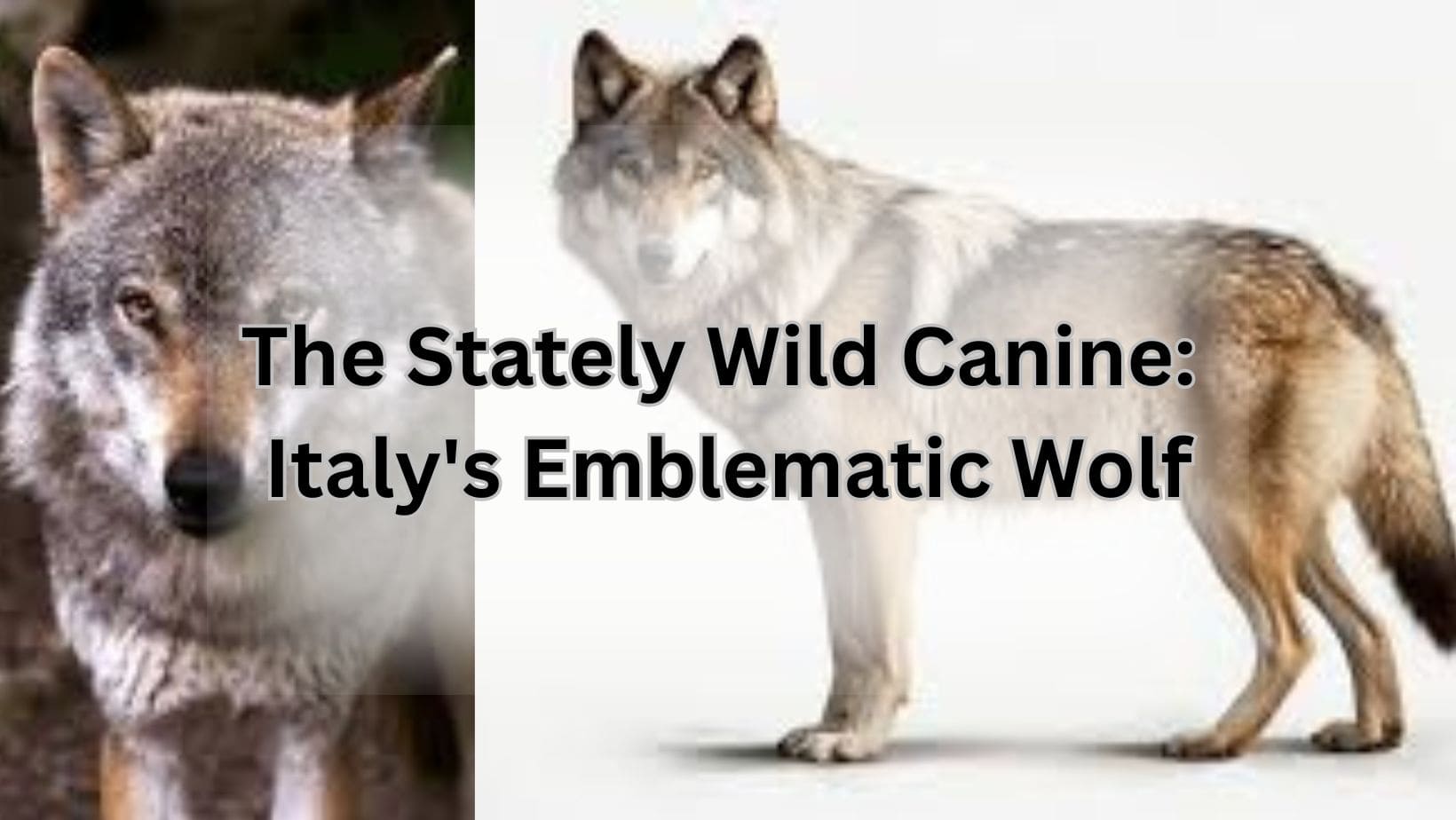
Overview of Italian Wolf
The Italian wolf, also known as Canis lupus italicus, is a fascinating carnivorous mammal that inhabits the natural habitats of Italy. These majestic creatures have a rich history and play a vital role in the ecosystem.
Habitat and Distribution
Have you ever wondered where the elusive Italian wolf calls home? These magnificent creatures can be found roaming the mountainous regions and forests of Italy, where they have adapted to thrive in their natural habitat.
From the Alps to the Apennines, Italian wolves have a vast geographical range that showcases their resilience and adaptability.
Physical Characteristics
What sets the Italian wolf apart from its relatives? With their distinctive appearance, Italian wolves are easily recognizable by their sleek fur, pointed ears, and piercing eyes.
These carnivores are well-adapted for hunting, with strong jaws and sharp teeth that make them formidable predators in the wild.
Conservation Status
How are conservation efforts helping protect the Italian wolf population? Unfortunately, Italian wolves are an endangered species facing threats such as habitat loss and human encroachment.
Conservationists are working tirelessly to safeguard these magnificent creatures through initiatives aimed at preserving their natural habitats and raising awareness about the importance of coexisting with wildlife.
Behavior of Italian Wolves
Social Structure
Ever wondered how Italian wolves organize themselves within their packs? Well, these majestic creatures have a fascinating social structure that revolves around a dominant alpha pair leading the pack.
The alpha male and female are like the cool kids at school, making all the important decisions for the group. But don’t underestimate the beta wolves; they play crucial roles in maintaining harmony within the pack.
It’s like a well-choreographed dance, with each wolf knowing their place and contributing to the pack’s success.
Hunting Habits
How do Italian wolves satisfy their carnivorous appetites? These clever predators have some impressive hunting habits up their furry sleeves.
They work together as a team, utilizing strategic tactics to take down prey much larger than themselves. It’s like watching a coordinated heist in the animal kingdom, with each wolf playing a specific role in the hunt.
From stealthy approaches to strategic ambushes, Italian wolves are masters of the hunt, ensuring they always have a full belly.
Communication Methods
Have you ever wondered how Italian wolves communicate within their packs and with other wolves? Well, these creatures have a sophisticated language all their own.
Through howls, barks, and body language, Italian wolves convey messages about territory, danger, and even courtship. It’s like they have their own secret code, allowing them to stay connected and informed across vast distances.
So next time you hear a wolf howl echoing through the forest, remember, it’s not just a sound; it’s a conversation in the wild.
In the wild world of Italian wolves, social structures, hunting habits, and communication methods play vital roles in their survival. By understanding these behaviors, we can gain a deeper appreciation for these incredible creatures and the intricate ways they navigate their natural habitat.
So, next time you encounter a wolf in the wild, remember to admire not just their beauty but also the clever strategies and teamwork that make them such successful predators.
Diet of Italian Wolves
Prey Selection
Ever wondered what’s on the menu for Italian wolves? Well, these majestic creatures have quite the diverse palate when it comes to their prey selection.
The Canis lupus italicus, also known as the Italian wolf, primarily hunts deer, wild boar, and chamois in the forests and mountains of Italy.
These carnivorous mammals have a keen eye for choosing their targets, often opting for animals that are weaker or older for an easier catch.
Hunting Techniques
How do Italian wolves manage to secure their meals in the wild? These cunning predators have developed a range of hunting techniques to ensure a successful catch.
From stalking their prey silently to coordinating attacks with their pack members, Italian wolves are skilled strategists when it comes to hunting. They rely on teamwork and communication to outsmart their targets and secure a meal for themselves and their pack.
Impact on Ecosystem
Have you ever considered the crucial role that Italian wolves play in maintaining the delicate balance of their ecosystem?
As top predators, Italian wolves help regulate the populations of their prey species, preventing overgrazing and ensuring the health of the ecosystem.
By keeping herbivore populations in check, Italian wolves indirectly impact the vegetation and other wildlife in their habitat, contributing to the overall biodiversity of the region.
Reproduction of Italian Wolves
Mating Season
Are you curious about when Italian wolves get romantic? Well, let’s dive into their mating season! The Italian wolf, scientifically known as Canis lupus italicus, typically mates during the winter months, usually from January to March. During this time, the wolves engage in courtship rituals to find their perfect match. It’s like a wolf version of “The Bachelor” out in the wild!
Gestation Period
Ever wondered how long it takes for Italian wolves to welcome their adorable pups into the pack? The gestation period for these carnivorous mammals lasts around 60 to 63 days after mating.
Just imagine the excitement and anticipation in the wolf den as they await the arrival of their little bundles of fur. It’s like waiting for a wolf-themed baby shower!
Pup Rearing
Have you ever thought about how Italian wolf packs raise their young? After the gestation period, the female wolf gives birth to a litter of pups, usually ranging from 4 to 6 adorable babies.
The entire pack comes together to care for the pups, with both parents and other pack members taking on roles in nurturing and protecting the little ones. It’s a true team effort in the wolf world!
In the wild world of Italian wolves, reproduction is a vital aspect of ensuring the survival of this endangered species. From the courtship dances of the mating season to the careful rearing of their precious pups, these wolves show us the importance of family and community in the animal kingdom.
So, the next time you hear a wolf howl in the distance, remember the love and dedication that goes into the cycle of life for these magnificent creatures.
Threats to Italian Wolf Population
Human Conflict
Have you ever wondered why Italian wolves are facing conflicts with humans? Well, it all boils down to competition for resources. As human populations expand, they encroach on the natural habitats of these beautiful creatures, leading to increased interactions and, unfortunately, conflicts.
The Italian wolf, scientifically known as Canis lupus italicus, has to navigate a world where its territory is shrinking due to human activities like agriculture and urbanization. This conflict not only threatens the survival of the Italian wolf but also poses risks to human safety.
Habitat Loss
What happens when the natural habitat of an Italian wolf diminishes? The answer is simple: survival becomes a challenge. These carnivorous mammals rely on specific habitats for hunting, breeding, and shelter.
However, with habitat loss due to deforestation, infrastructure development, and land conversion, Italian wolves are left with limited options. Conservation efforts are crucial to protect the remaining habitats and ensure the survival of this endangered species.
Illegal Poaching
How devastating is illegal poaching for the Italian wolf population? Imagine being hunted for profit or sport, facing the threat of extinction due to human greed. Illegal poaching not only decimates the Italian wolf population but also disrupts the delicate balance of ecosystems.
Conservationists are fighting a tough battle against poachers to safeguard these majestic creatures and preserve biodiversity. It’s time to crack down on illegal hunting and protect the Italian wolf from senseless exploitation.
In the wild world of Italian wolves, human conflict, habitat loss, and illegal poaching pose significant threats to their population. As a Canid Wild Life Love, it is vital understand the importance of addressing these challenges to ensure the survival of this endangered species.
By raising awareness, supporting conservation efforts, and advocating for stricter laws against poaching, we can work together to protect the Italian wolf and secure a brighter future for these magnificent creatures. Let’s stand united in the fight to save the Italian wolf from the brink of extinction.
Conservation Efforts for Italian Wolves
Protected Areas
Did you know that the Italian wolf, scientifically known as Canis lupus italicus, thrives in protected areas designated to safeguard their natural habitats? These areas play a crucial role in the conservation of this endangered species.
Reintroduction Programs
Have you ever wondered how Italian wolves are being reintroduced into their former habitats? Reintroduction programs are key in ensuring the survival of this carnivorous mammal. These initiatives aim to restore the wolf population to sustainable levels.
Research and Monitoring
How do researchers and conservationists keep track of Italian wolves in the wild? Ongoing studies and monitoring efforts provide valuable insights into the behavior, diet, range, adaptations, and threats faced by these majestic creatures. By understanding these factors, we can better protect and conserve the Italian wolf population.
Interactions with Humans
Folklore and Mythology
Did you know that Italian wolves have a rich history in folklore and mythology? These majestic creatures have been featured in various Italian legends and stories, often symbolizing strength, freedom, and loyalty.
From the ancient Roman tales to modern-day Italian literature, the Italian wolf holds a special place in the hearts of many.
Livestock Predation
Have you ever wondered about the conflicts that arise when Italian wolves prey on livestock? While these carnivorous mammals play a crucial role in the ecosystem, their hunting habits can sometimes lead to clashes with farmers and ranchers.
Finding a balance between conservation efforts and protecting livestock is essential to ensure the survival of both Italian wolves and domestic animals.
Tourism Opportunities
Have you considered the potential eco-tourism ventures related to Italian wolf conservation? With the growing interest in wildlife tourism, there are exciting opportunities to educate the public about these endangered species while promoting sustainable travel practices.
Imagine embarking on a guided tour through the Italian wilderness, learning about the conservation efforts to protect the natural habitat of the Canis lupus italicus – it’s an adventure worth experiencing!
Comparison with Other Wolf Species
European Wolf
What sets the Italian wolf apart from other European wolf subspecies like the Eurasian wolf? Well, for starters, the Canis lupus italicus, known for its smaller size and distinct genetic makeup, has adapted uniquely to the Italian peninsula.
While European wolves roam vast territories, Italian wolves have carved out their niche in the Apennine Mountains, showcasing their resilience and resourcefulness in a challenging environment.
Read More: Eurasian Wolf: Unleashing the Mysteries of the Wild Canid
Grey Wolf
How do Italian wolves stack up against their grey wolf cousins? Despite sharing a common ancestry, these two wolf species exhibit notable differences.
Grey wolves, renowned for their widespread distribution, have a more varied diet and social structure compared to the Italian wolves.
However, both species demonstrate remarkable hunting skills and a strong sense of pack unity, essential for their survival in the wild.
Read More: Arabian Gray Wolf: Unraveling the Mysteries of the Desert Canid
Red Wolf
What makes the Italian wolf distinct from the red wolf species? While the red wolf faces severe endangerment in North America, the Italian wolf population, although still vulnerable, shows signs of recovery due to conservation efforts.
The red wolf’s smaller stature and reddish coat contrast sharply with the Italian wolf’s grayish-brown fur, reflecting the diverse adaptations each species has developed to thrive in their respective habitats.
Importance of Italian Wolves in the Ecosystem
Keystone Species
Did you know that the Italian wolf, scientifically known as Canis lupus italicus, plays a vital role as a keystone species in its ecosystem? These majestic creatures are not just the top predators in their habitat; they are also crucial for maintaining the delicate balance of the entire ecosystem.
Trophic Cascade Effects
Have you ever wondered how the presence of Italian wolves can trigger a trophic cascade effect in their environment? These carnivorous mammals have a domino effect on the ecosystem, influencing the population dynamics of various species. By preying on herbivores, they regulate their numbers, preventing overgrazing and promoting plant diversity.
Biodiversity Conservation
How do Italian wolves contribute to biodiversity conservation efforts? These endangered species are essential for maintaining the health and resilience of their ecosystems. By keeping prey populations in check, they prevent the dominance of certain species, allowing for a more diverse range of plants and animals to thrive.
Italian wolves are not just magnificent creatures; they are key players in the intricate web of life in their natural habitat. Through their interactions with other species and their role as top predators, they shape the environment in ways we are only beginning to understand.
As conservation efforts continue to protect these remarkable animals, we ensure the preservation of biodiversity and the health of the ecosystems they call home.
Future Outlook for Italian Wolves
Challenges Ahead
Did you know that the Canis lupus italicus, commonly known as the Italian wolf, faces numerous challenges in the future? As an endangered species, these carnivorous mammals have to navigate through various obstacles to ensure their survival in their natural habitat. From habitat loss to human-wildlife conflicts, the Italian wolf population must overcome these hurdles to thrive.
Potential Solutions
How can we help mitigate the threats that Italian wolves face? Conservation efforts play a crucial role in safeguarding these majestic creatures. By implementing strategies such as habitat restoration, establishing protected areas, and promoting coexistence between humans and wolves, we can ensure a brighter future for the Italian wolf population.
Role of Public Awareness
Have you ever considered the impact of public education and awareness on Italian wolf conservation? By raising awareness about the importance of preserving these animals and their habitats, we can inspire more people to take action. Engaging the public in conservation efforts can lead to positive outcomes for Italian wolves and other endangered species.
In a world where the survival of species like the Italian wolf hangs in the balance, it is essential to address the challenges they face head-on.
By implementing effective solutions and increasing public awareness, we can create a more promising future for these magnificent creatures. Let’s work together to protect and preserve the Italian wolf for generations to come.



